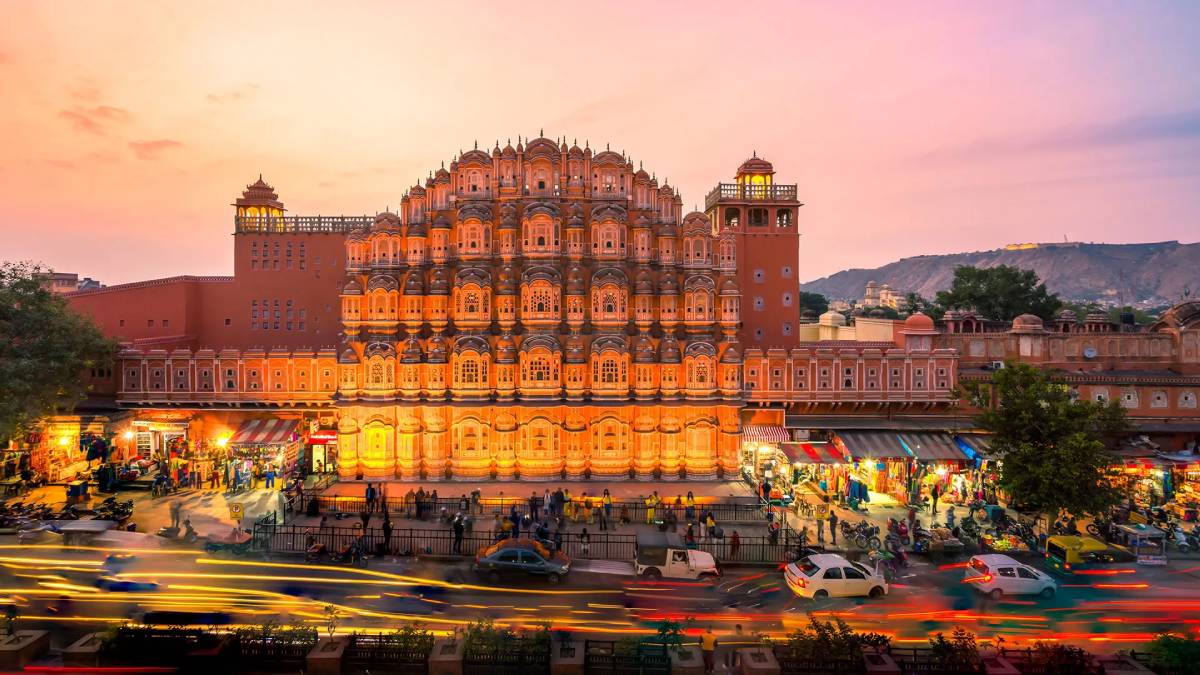Jaipur, the capital city of Rajasthan, is a vibrant blend of history, culture, and architectural brilliance. Known as the Pink City due to its distinctly colored buildings, Jaipur offers a wealth of historical sites that reflect its royal heritage and opulent past. Here are some of the best historical places to visit in Jaipur:
1. Amber Fort
Amber Fort, also known as Amer Fort, is a majestic fort located on a hilltop overlooking Maota Lake. Built in 1592 by Raja Man Singh, the fort is a stunning example of Rajput architecture. Its intricate carvings, mirror work, and beautiful courtyards make it a must-visit. Don’t miss the light and sound show in the evening that narrates the fort’s history.
2. City Palace
Located in the heart of Jaipur, the City Palace is a sprawling complex of courtyards, gardens, and buildings. Constructed by Maharaja Sawai Jai Singh II, it still serves as the residence of the royal family. The Mubarak Mahal, Chandra Mahal, and the museum within the palace showcase royal artifacts, costumes, and manuscripts, offering a glimpse into the regal lifestyle.
3. Hawa Mahal
The Hawa Mahal, or the Palace of Winds, is an iconic symbol of Jaipur. This five-story pink sandstone structure was built in 1799 by Maharaja Sawai Pratap Singh. Designed to allow royal ladies to observe street festivities without being seen, its 953 small windows, or ‘jharokhas’, provide stunning views of the city and allow cool breezes to flow through the palace.
4. Jantar Mantar
A UNESCO World Heritage Site, Jantar Mantar is an astronomical observatory built by Maharaja Sawai Jai Singh II in the 18th century. The observatory houses the world’s largest stone sundial and various other instruments used to measure time, track celestial bodies, and predict eclipses. It’s a fascinating place for those interested in astronomy and historical scientific achievements.
5. Nahargarh Fort
Nahargarh Fort offers panoramic views of Jaipur city. Built in 1734 by Maharaja Sawai Jai Singh II, the fort was part of the city’s defense ring, along with Amer and Jaigarh forts. Its Indo-European architecture and the Madhavendra Bhawan within the fort, which housed the king’s nine queens, are particularly noteworthy.
6. Jaigarh Fort
Known as the Fort of Victory, Jaigarh Fort is renowned for its military architecture and historical significance. It houses the world’s largest cannon on wheels, Jaivana Cannon. Built in 1726 by Maharaja Jai Singh II, the fort also offers spectacular views of the Amber Fort and the surrounding landscape.
7. Albert Hall Museum
The Albert Hall Museum, located in the Ram Niwas Garden, is the oldest museum in Rajasthan. Built in 1887, its Indo-Saracenic architecture is a visual delight. The museum’s extensive collection includes artifacts, carpets, paintings, and an Egyptian mummy, providing a rich insight into Rajasthan’s cultural heritage.
8. Jal Mahal
Jal Mahal, or the Water Palace, is a beautiful palace situated in the middle of Man Sagar Lake. Built in the 18th century by Maharaja Madho Singh, this five-story palace remains largely submerged, with its top floor visible above the water. Although entry to the palace is restricted, the view from the lakeshore is mesmerizing, especially during sunset.
9. Gaitore Ki Chhatriyan
Located on the outskirts of Jaipur, Gaitore Ki Chhatriyan is the royal cremation site for the Kachhwaha Rajput kings. The cenotaphs, or ‘chhatris’, are intricately carved and offer a peaceful retreat from the city’s hustle and bustle. Each chhatri is a unique blend of Hindu and Mughal architectural styles, reflecting the grandeur of the royal family.
10. Sisodia Rani Garden and Palace
Built by Maharaja Sawai Jai Singh II in 1728 for his queen, Sisodia Rani Garden and Palace is a beautiful garden complex that combines Mughal and Indian architectural styles. The garden, with its tiered layout, fountains, pavilions, and murals depicting scenes from the life of Radha-Krishna, offers a tranquil escape and a glimpse into royal romance.

